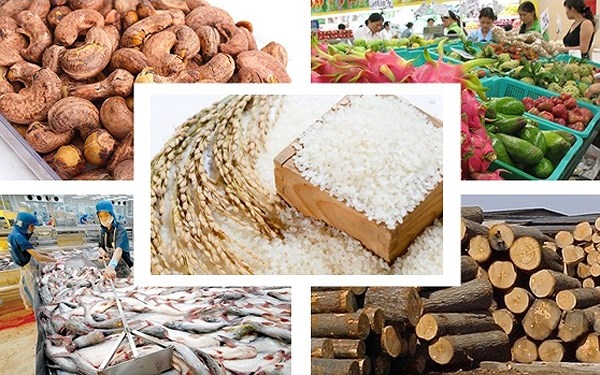Bright prospects ahead for farm exports to EU in 2022
VOV.VN - Vietnamese export of key agricultural products such as coffee, cashew nuts, rubber, fruit and vegetables, and rice to the EU market is set to enjoy strong growth in 2022, according to industry experts.
The Ministry of Industry and Trade forecasts that coffee, cashew nuts, rubber, fruit and vegetables, pepper, rice, and tea will all continue to be major contributors to the total export turnover of agricultural products to this market and will grow strongly in the year ahead.
As the number one product, coffee will continue to take advantage of the 0% tax rate under the Vietnam - EU Free Trade Agreement (EVFTA) as it increases its market share as part of the EU’s total import of US$10 billion annually.
The demand for cashew nut consumption in the two largest markets in the EU, the Netherlands and Germany, continued to record an increase in late 2021 due to high demand from the food processing industry coupled with an increasing demand among consumer.
This indicates the positive prospects for cashew nut exports to the EU this year. In particular, with deeply-processed cashew nut products being reduced to 0% tax under the terms of the EVFTA, the cashew nut export turnover will have plenty of opportunities to maintain its growth rate in the EU market at around 6% in value.
Although rubber exports have been greatly impacted by the COVID-19 pandemic, with rubber prices continuing to remain high in 2021 and showing no signs of abating, rubber exports to the bloc are likely to continue to achieve a strong turnover this year.
Most notably, fruit remains one of the potential products that the country needs to focus on exploiting advantages from the EVFTA, thereby contributing to promoting exports to the EU.
The demand for fruit is increasing daily in the bloc due to eating habits to protect and promote health. Potential fruit varieties for good growth in the EU market in the near future includes fresh tamarind, jackfruit, litchi, plum, passion fruit, dragon fruit, guava, mango, and mangosteen.
It is also noteworthy that through the EVFTA, EU countries have pledge to eliminate tariffs on pepper products as soon as the agreement comes into effect, especially for processed products that previously had a tax rate of 5% to 9%. This has contributed to allowing Vietnamese pepper exports to enjoy many advantages in the EU market.
Moreover, investors in the bloc are also in the process of considering moving their processing plants to the nation to take advantage of cheap raw materials and labour, thereby creating a driving force to bolster pepper exports to the EU.
With rice, according to the Vietnam Food Association (VFA), local rice exports to the EU market this year are forecast to reach at least 60,000 tonnes because the quality of Vietnamese rice has changed in the eyes of the EU importers.
With Vietnamese rice already having a number of traditional customers in Germany, the Netherlands, Italy, and Poland, local rice exports to the bloc in the year ahead are anticipated to maintain their strong growth.
In particular, with the quota of 80,000 tonnes of rice enjoying a preferential tax rate of 0% from the EVFTA not being filled in 2021, as well as the increasing trend of rice use in the EU due to the popularity of Asian food items, providing that the supply is ensured, rice exports to the bloc will enjoy more opportunities.


